What is prostatitis? We will analyze the causes of occurrence, diagnosis and treatment methods in the article of a doctor, urologist with 28 years of experience.
Definition of the disease. Causes of the disease
ProstatitisIt is an inflammatory process of prostate tissue, accompanied by pain in the lower back, perineum or pelvic region, as well as disturbances in the work of the lower urinary tract.
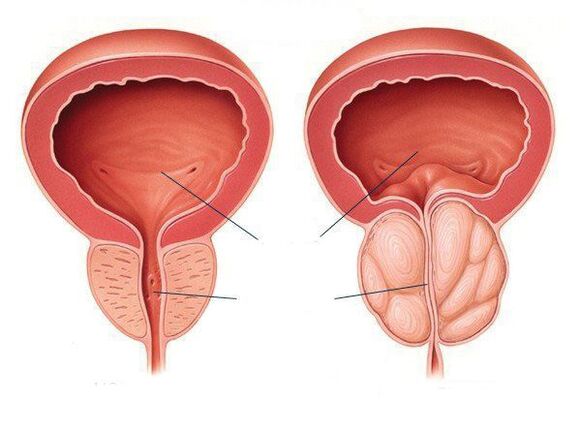
The prostate gland (prostate) refers to the male reproductive system. It sits in front of the rectum, below the bladder and surrounds the urethra (urethra). This is why, when the prostate gland becomes inflamed, it compresses the urethra, which further leads to various problems with urination. The main function of the prostate is to produce secretion (fluid), which is part of the sperm and liquefies it to ensure the normal movement of sperm.
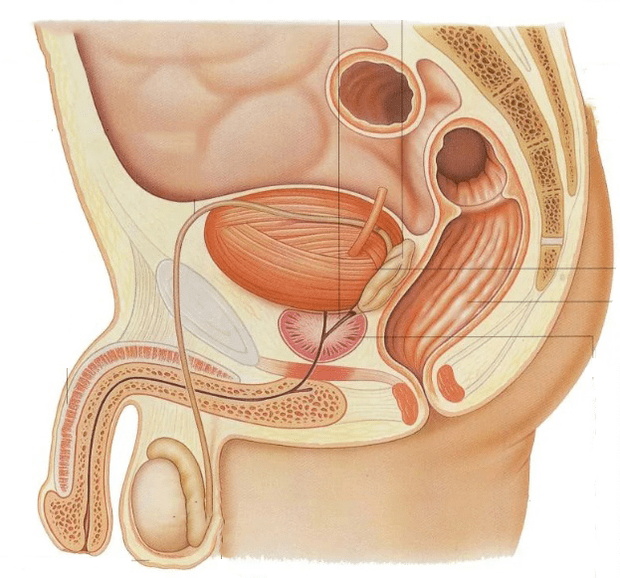
Pathological conditions of the prostate gland, such as cancer or benign hyperplasia, are more common in elderly patients. Prostatitis varies in what affects men of all age groups, but most often the disease occurs in men of reproductive age (from 8 to 35% of cases).
Prostatitis occurs most often in the practice of a urologist. It can occur suddenly (acute) or gradually, and its manifestations are constant and long-term (chronic). The chronic form is much more common than the acute one. Chronic prostatitis ranks fifth among the twenty major urological diagnoses.
Prostatitis can be either an independent disease or be combined with benign prostatic hyperplasia and prostate cancer. In recent years, there has been a decline in the incidence of prostatitis in the male population: if in 2012 the incidence was 275 per 100 thousand population, then in 2017 the primary incidence was 203 per 100 thousand population.
Reasons for developing prostatitisare bacterial (infectious) and non-bacterial (non-infectious).Infectious prostatesmost common in men under 35 years of age. Most often this form of the disease is caused by gram-negative microorganisms, especially enterobacteriaceae, E. coli, indigestion, pseudomonas and proteus, as well as sexually transmitted infections, such as gonococcus, chlamydia, etc. Very rarely, prostatitis can occur due to the mycobacterium tuberculosis. In chronic bacterial prostatitis, the spectrum of pathogens is wider and may include atypical pathogens. It should be remembered that chronic bacterial prostatitis is a polyetiological disease, i. e. it can have several causes.
Factors contributing to the development of inflammationin the prostate gland:
- sexually transmitted infections;
- immunodeficiency states;
- prostate biopsy;
- invasive manipulations and operations;
- Lifestyle;
- diarrhea, constipation;
- homosexual contacts;
- frequent change of sexual partners;
- sedentary lifestyle etc.
Chronic non-bacterial prostatitisdiagnosed in patients complaining of chronic pain in the prostate area, while an infectious (bacterial) causative agent of the disease has not been found in them. Despite numerous studies, the cause of this type of chronic prostatitis is not fully understood, however, there are several factors that can cause its development:
- increased prostate pressure;
- muscle pain in the pelvic region;
- emotional disorders;
- Autoimmune disorders (antibodies that are supposed to fight infection, sometimes for some reason attack the cells of the prostate gland);
- Physical activity;
- irregular sexual life;
- lifting weights etc.
In some cases, prostatitis can occur after performing transurethral procedures such as urethral catheterization or cystoscopy, as well as after transrectal prostate biopsy.
Although the true incidence of different types of prostatitis has not been conclusively established, the following data are provided:
- acute bacterial prostatitis accounts for approximately 5-10% of all cases of prostatitis;
- chronic bacterial prostatitis - 6-10%;
- chronic non-bacterial prostatitis - 80-90%;
- prostatitis, including prostatodin (neurovegetative disorders of the prostate gland) - 20-30%.
If you find similar symptoms, consult your doctor. Do not treat yourself - it is dangerous to your health!
Symptoms of prostatitis
All forms of inflammationthe prostate gland, in addition to asymptomatic, is joined by the presence of the following symptoms:
- pain in the lumbar region;
- feelings of discomfort with intestinal peristalsis;
- pain in the perineum or pelvic region;
- disturbances in the work of the lower urinary tract.
The main symptoms of the lower urinary tract in the presence of prostatitis:
- frequent desire to urinate;
- difficulty urinating, i. e. a weak flow and the need for "exertion";
- burning pain or its intensification during urination.
In the most diagnosed menacute bacterial prostatitisPelvic pain and urinary tract symptoms occur, such as increased urination and urinary retention. This can lead to the development of systemic manifestations such as fever, chills, nausea, vomiting and malaise. Acute bacterial prostatitis is characterized by an acute onset of the disease with a vivid clinical picture. This is a serious disease.
Men with diagnosedchronic bacterial prostatitisnote symptoms of a periodic nature, which increase and decrease. With a worsening, pain and discomfort are noticed. The pain sensations are localized mainly at the base of the penis, around or above the anus. Also, the pain can occur slightly above the pubic bone or in the lower back, spreading to the penis and testicles. Defecation also becomes painful. Sometimes signs of infection develop in the lower parts of the urinary system: burning pain and frequent urination, frequent pushing. These symptoms can be confused with the manifestations of acute bacterial prostatitis, but there is usually a sudden onset, chills, fever, weakness, pain throughout the body, in the lower back, and in the genitals, frequent urination andpainful, aching pain. If you find such symptoms, you should urgently consult a doctor.
If the modern standard examination has not proved that chronic pain is caused by a pathological process in the prostate gland, then we are dealing with chronic non-bacterial prostate, which is also calledchronic pelvic pain syndrome(the term has been used since 2003). In the presence of chronic pelvic pain syndrome, a man's quality of life is significantly reduced, as this syndrome sometimes leads to various psychological and sexual disorders:
- increased fatigue;
- feel powerless;
- erectile dysfunction;
- painful ejaculation;
- pain after sexual intercourse etc.
In chronic nonbacterial prostatitis / chronic pelvic pain syndrome, there is a feeling of constant discomfort or pain in the lower back, most often at the base of the penis and around the anus, for at least 3 months. Painful sensations are localized to a "target organ" or several pelvic organs. Most often, with this form of prostatitis, the pain is localized in the prostate gland (46%).
In chronic prostatitis, sexual disorders have a number of characteristics. First, all the components of a man's cumulative (sexual) function are disturbed to varying degrees: lust, erection, ejaculation. Second, sexual dysfunction occurs mainly in persons with a long history (more than 5 years) of the disease. Third, sexual dysfunction is often the main reason to seek medical attention.
Erectile dysfunction is observed by 30% of patients suffering from chronic prostatitis, mainly due to the psychogenic factor - a catastrophic perception of the disease.
Symptoms of prostatitis occur at least once in a lifetime in 50% of men.
Pathogenesis of prostatitis
The mechanism of prostate development is multifaceted and very complex. Many factors are involved in its development. Most cases of acute bacterial prostatitis are caused by a cascade of processes caused by an ascending urethral infection or intraprostatic reflux (urine leakage).
Penetration of microorganisms into the prostate gland is possible by the contagious route (through the urethra) or transrectally by the lymphatic route. Diarrhea and constipation associated with impaired rectal barrier function are considered a provocative factor in chronic prostatitis. However, the mechanism of penetration of microorganisms into the prostate is not yet clearly established.
Disorder of urine with prostate can result from:
- increase in smooth muscle tone of the prostate urethra by increasing adrenergic receptor activity;
- enlargement of the prostate or narrowing of the urethra, resulting in disturbed urine flow, blockage of the bladder outlet, and intraprostatic reflux.
In the future, there is a violation of the drainage of the prostate gland ducts, stagnation of prostate secretions, edema, activation of the arachidonic acid cascade, inflammation and ischemia. A vicious circle of pathological changes is formed.
Classification and developmental stages of prostatitis
There are 4 main categories (types) of prostatitis.
- Acute bacterial prostatitis(category I).
- Chronic bacterial prostatitis(category II).
- Chronic prostatic / non-bacterial syndromechronic pelvic pain (category III). It can be inflammatory (category III A) or non-inflammatory (category III B).
- Asymptomatic inflammatory prostatitis.Histological prostatitis identified by prostate biopsy (category IV).
Chronic bacterial prostatitisDifferent fromspicy,manifested as recurrent episodes of deterioration with the presence or absence of complete forgiveness between them. The symptoms are usually less severe than those of acute prostatitis.
Classification of American National Institutes of Health. . .
- Type I(acute bacterial prostatitis) - acute infection of the prostate gland: the symptoms of the disease appear suddenly. Chills, fever, pain all over the body, weakness, pain in the lower back and genital area, frequent, painful urination, pain during ejaculation. Possible symptoms of acute bacterial prostatitis include blood in the urine and / or semen. It is rare. It is effectively treated with antibiotics.
- Type II(chronic bacterial prostate) - a chronic or recurrent infection of the prostate gland: the symptoms are the same as in acute prostatitis, but appear gradually and are less pronounced. Several courses of antibiotic therapy may be required.
- Type III(chronic non-bacterial prostatitis and chronic pelvic pain syndrome): no evidence of infection.
- III A kind: presence of leukocytes in ejaculation / prostate secretion / third part of urine taken after prostate massage.
- III type B: lack of leukocytes in ejaculation / prostate secretion / third part of urine taken after prostate massage. Pain in the lower back and genital area, frequent urge to urinate, difficulty urinating (often at night), burning or painful urination, and ejaculation. Represents about 90% of all cases of prostatitis. There are no known causes or clinically proven treatments.
- Type IV(asymptomatic inflammatory prostatitis): Sometimes an increase in the number of white blood cells. No treatment required. Detected on prostate biopsy.
The boundaries between different forms of prostatitis are blurred.
Complications of prostatitis
With inflammatory lesions of the prostate gland, nearby organs are involved in the pathological process: seminal tuberculosis, Cooper glands, seminal vesicles, and posterior urethra. The infection can simultaneously penetrate the prostate gland and surrounding organs.
Vesicles- inflammation of the seminal vesicles. The pain is localized in the groin area and deep in the pelvis, radiating to the sacrum. The pain is usually unilateral, as both seminal vesicles are affected to varying degrees. Vesiculitis may be asymptomatic. The only complaint of patients may be the presence of blood in the semen. Periodic pyuria (pus in the urine) and pyospermia (pus in the ejaculate) are also noted.
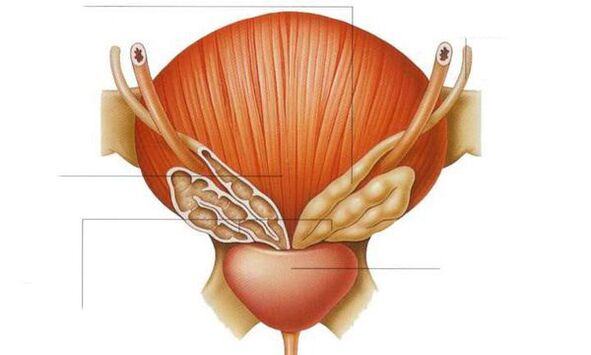
Posterior urethritis, coliculitis (inflammation of the seminal tubercle). . . With prostate, the infection penetrates the seminal tubercle, this is due to the proximity of the prostate gland to the excretory ducts.
Prostate gland abscess.Pathogens that cause prostatitis can also provoke an abscess of the prostate gland. It is a severe septic (bacterial) disease, which is accompanied by weakness, fever, chills with sweating. In some cases, impaired consciousness and delirium are observed. The patient needs hospitalization.
Prostate sclerosis (fibrosis).This is a late complication of prostatitis, which is based on the replacement of prostate tissue with signs (connective tissue degeneration, i. e. sclerosis), which leads to the fact that the gland shrinks, shrinks in size and completely loses its function. As a rule, sclerotic symptoms develop long after the onset of the inflammatory process in the prostate gland.
Prostate cysts.These formations can contribute to the formation of stones in the prostate gland. The presence of an infection in a cyst can lead to a prostate abscess. It is not difficult to diagnose a prostate cyst using ultrasonography. They can also be detected with a digital colon examination.
Prostate stones.They are quite common. The causes of the disease are not fully understood, but most experts agree that they arise as a result of a prolonged inflammatory process in the prostate gland. The stones are single and numerous, with a diameter of 1 to 4 mm. Large stones are rare. The stones block the gland, due to which the secretion gets stuck in it, the gland stretches too much and special cysts form, into which the infection enters. Patients with stones in the prostate gland should be treated with persistent dull pain in the perineum. Painful sensations spread to the glans penis and cause frequent urge to urinate, which becomes hard and painful.
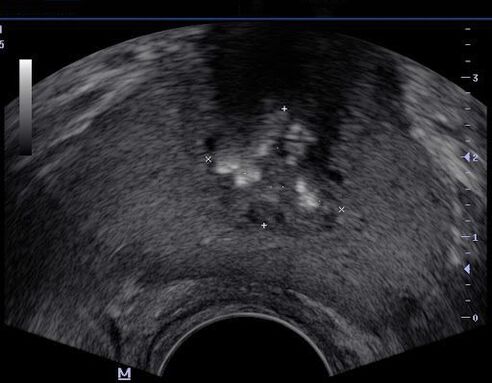
Sterility.Chronic long-term prostatitis mainly reduces the motor function of the sperm, making them completely immobile. One of the consequences is the violation of their production, the formation of immature sperm that have an abnormally altered shape (and a smaller number of them than before).
Spillage disorder.Prostatitis of all forms causes sexual dysfunction. At first, patients experience premature ejaculation, having a normal erection, which then weakens, and the rate of orgasm decreases. Prolonged existence of chronic prostatitis contributes to a decrease in the production of male sex hormones and a weakening of libido.
Erectile dysfunction.Relationship The relationship between chronic prostatitis / chronic pelvic pain syndrome and erectile dysfunction is described. This disorder is especially painful for men.
Diagnosis of prostatitis
The appearance of the first signs of inflammation of the prostate gland requires immediate medical attention. The urologist will rule out many diseases that have similar manifestations and will determine which category (type) the disease belongs to. Before choosing a treatment, a specialist will perform the necessary examinations and offer to undergo an evaluation test.
What questions can the doctor ask
At the appointment, the doctor will definitely determine: the duration of clinical manifestations of the disease, the location and nature of the pain, for example, in the perineum, scrotum, penis and inner thigh; changes in the nature of sperm (presence of pus and blood).
While waiting, the urologist will offer the completion of special questionnaires, one of which is the index of chronic prostatitis symptoms.
The patient should ask the doctor questionsfor those tests and studies that need to be done, how to prepare for them, what treatment you plan to prescribe and where I can get more information about the disease.
Chronic bacterial prostatitis is diagnosed when symptoms last for at least three months.
The survey will include:
- Digital examination of the gland to determine the degree of prostate enlargement and its stability.
- Prostate, urine and / or ejaculation secretion tests.
- Identification of urogenital infection.
- Ultrasound examination of the urinary system (kidneys, prostate, bladder with determination of residual urine).
- Urodynamic study.
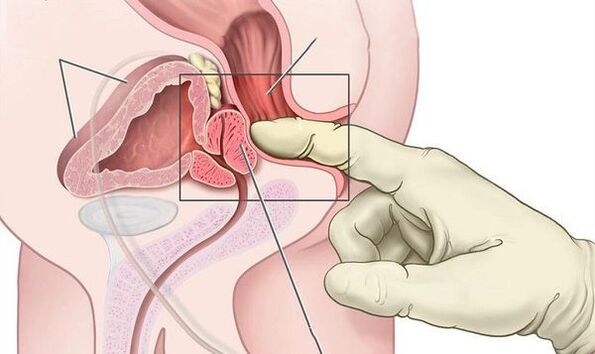
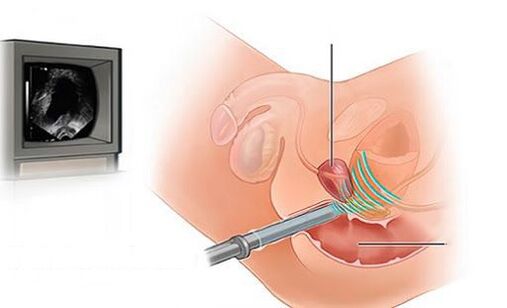
In the case of acute bacterial prostatitis, a swollen and painful prostate gland can be found with a digital examination of the colon. Prostate massage is contraindicated as it can lead to bacteremia and sepsis.
The most important study in the examination of patients with acute bacterial prostate is the culture of prostate secretions. In order to categorize chronic prostatitis, quantitative culture and microscopy of urine samples and prostate secretions obtained after prostate massage are still important methods.
Androflor - a comprehensive study of urogenital tract microbiocenosis in men by PCR. Allows you to determine the qualitative and quantitative composition of the microflora. Used to diagnose and control the infectious diseases of the genitourinary system.
After identifying the cause of the disease, the doctor will recommend a course of treatment. It should be remembered that standard methods only in 5-10% of cases can detect an infection, which eventually leads to prostate.
What is the relationship between prostatitis, prostate specific antigen (PSA) and prostate cancer
Measuring total PSA and free PSA levels in the prostate does not provide additional diagnostic information. It is known that in 60 and 20% of patients with acute and chronic bacterial prostate, respectively, the level of prostate specific antigen (PSA) increases. Upon completion of treatment, the PSA level decreases in 40% of patients. PSA is not considered a specific marker for prostate cancer because PSA levels may increase in benign prostatic hyperplasia and prostatitis.
Treatment of prostatitis
The main role in the treatment of pathology is assigned to drug therapy.
Treatment with alpha1-blockers
Alpha1-blockers are prescribed for patients who complain of difficulty urinating. These medications help facilitate urination and relax the muscles of the prostate gland and bladder. Some patients are prescribed medication to lower hormone levels, which can help shrink the gland and reduce discomfort. Muscle relaxants can help relieve pain caused by an edematous prostate that puts pressure on nearby muscles. Non-steroidal anti-inflammatory drugs (NSAIDs) may help if pain is present.
Standard antibiotic therapy in most cases does not lead to a reduction in the number of relapses of the disease, and therefore an integrated approach is often used and also prescribed.ancillary drugs: biostimulants, extracts of various plants and insects and their biological constituents, which may be in the form ofrectal suppositories. . . Despite the large arsenal of drugs, the effectiveness of their use remains insufficient.
Physiotherapy in the treatment of prostatitis
For chronic prostatitis of categories II, III A and III B, physiotherapeutic methods can also be used:
- prostate gland massage (prostate);
- laser therapy;
- microwave hyperthermia and thermotherapy;
- electrical stimulation with modulated currents of cutaneous or rectal electrodes;
- acupuncture (acupuncture).
The efficacy and safety of these treatments are still under study. It is also used to treat prostatitispopular methods, p. sh.hirudotherapy.The effectiveness and safety of this method for treating prostatitis has not been proven.
Stem cell injection
Cell therapy (stem cell injections) in the treatment of prostatitis is currently a promising technique in the early stages of development. At present, regarding the injection of stem cells into the prostate, we can only have hypotheses about its mechanisms, as well as empirical data obtained from individual groups of researchers.
Surgical treatment of prostatitis
Surgical methods are used only to treat complications of prostatitis - abscess and emptying of the seminal vesicles.
Treatment of chronic pelvic pain syndrome requires special consideration. Asymptomatic inflammatory prostatitis (category IV) should not be treated if the patient does not plan to have prostate surgery. In this case, the patient is given a prophylactic course of antibiotic therapy.
Diet and lifestyle for prostatitis
A special diet for prostatitis is not necessary, but eating lots of vegetables, lean meats and dairy products will improve bowel function. Importers It is important to consume plenty of fiber, foods rich in vitamin E (wheat germ, corn oil, etc. ), Sugar should be replaced with natural honey. Proper nutrition for prostatitis can improve bowel function and reduce the likelihood of a speedy recovery or recovery. It is recommended to adhere to a healthy lifestyle, drink more fluids and limit caffeine and alcohol.
Forecast. Prophylaxis
Acute prostatitis often becomes chronic, even with timely and adequate treatment.
Complete recovery is not always possible to achieve, however, with an accurate consistent therapy and following the doctor's recommendations, it is possible to eliminate discomfort and pain. Independenttreatment of prostatitis at homecan be dangerous and lead to complications.
Not all cases of prostatitis can be identified as a cause, but there are a number of steps you can take to prove that prostatitis does not occur. The same steps can help control existing symptoms:
- Drink plenty of fluids. Drinking too much fluid leads to frequent urination, thus facilitating the flushing of infectious agents from the prostate urethra.
- Empty your bladder regularly.
- Avoid irritation of the urethra. Limit caffeine intake, spicy foods and alcohol.
- Reduces prostate pressure. Men who ride a bicycle often need to use a separate seat to relieve pressure in the prostate area.
- Stay sexually active.



























